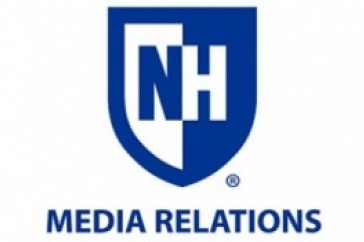UNH Finds Residues from Brewery Industry Show Promise as Dairy Heifer Feed

DURHAM, N.H.—Wet brewers’ grains, the abundant residues of the brewery industry, show promise as a potential cost-effective, high-nutrient feed replacement for dairy heifers, according to new research from the New Hampshire Agricultural Experiment Station at the University of New Hampshire.
The study is led by Peter Erickson, professor of agriculture, nutrition and food systems and extension dairy specialist, and Eric Hatungimana, doctoral student in dairy science.
“The cost of energy and protein feeds, especially corn and soybean, has been rising and dairy farmers are looking for alternative feed sources,” said Hatungimana. “One strategy is to use less expensive feeds such as wet brewers’ grains, which appears to be feasible due to their nutritional value, availability and low cost. Our project evaluated the effect of replacing corn and soybean meal with wet brewers’ grains on growth performance of dairy heifers.”
The brewery industry uses mostly malted barley to produce beer, leaving behind a protein-rich residue known as “beer waste” that is suitable for dairy cattle feeding. While farmers have been feeding wet brewers’ grains to cows for years, there is limited data on feeding it to heifers—young female cows that have not borne a calf. Erickson and Hatungimana found that including these wet brewers’ grains in the diet of dairy heifers at a rate of 20% can completely replace soybean or corn-based feed and provide similar growth performance compared to diets using those concentrates. Moreover, replacing corn and soybean meal with wet brewers’ grains considerably reduces the feeding cost for raising dairy heifers.
“These findings are so important for dairy producers who are currently facing low milk prices,” said Hatungimana. “Since the cost of feeds accounts for 70% to 80% of the total production in any dairy farm, using nutritious and cheaper by-products will help dairy farmers increase returns while improving animal performance. Using wet brewers’ grains is also an economically and environmentally sound way for food processors to reduce waste.”
Raising heifers is expensive as they do not provide farm income until they calve at 22 to 24 months and start producing milk. Incorporating wet brewers’ grains into their diet would reduce the cost of production while achieving a desired growth until first calving. There are approximately 800 breweries around the Northeast; these produce an ample supply of wet brewers grains.
The researchers also evaluated the effect on storage of wet brewers’ grains with a commercial preservative or salt on yeast and mold growth. They found that treating wet brewers’ grains with salt not only improved dry matter, fiber and protein digestibility, but also reduced spoilage by mold and yeast. Salt is less expensive than commercial preservatives and is easily accessible to farmers.
This research is based upon work supported by the NH Agricultural Experiment Station, through joint funding of the National Institute of Food and Agriculture, U.S. Department of Agriculture, under award number 1016574, and the state of New Hampshire. It is supported by Agri-King Company, Fulton, Ill., which provided the commercial preservative. Rock River Laboratory helped in the analysis of wet brewers’ grains nutrients, and Bad Lab Brewery, Stuart Farm and Scruton Farm provided fresh wet brewers’ grains for the study.
Founded in 1887, the NH Agricultural Experiment Station at the UNH College of Life Sciences and Agriculture is UNH’s original research center and an elemental component of New Hampshire's land-grant university heritage and mission.
The University of New Hampshire is a flagship research university that inspires innovation and transforms lives in our state, nation and world. More than 16,000 students from all 50 states and 71 countries engage with an award-winning faculty in top ranked programs in business, engineering, law, liberal arts and the sciences across more than 200 programs of study. UNH’s research portfolio includes partnerships with NASA, NOAA, NSF and NIH, receiving more than $100 million in competitive external funding every year to further explore and define the frontiers of land, sea and space.
PHOTO AVAILABLE FOR DOWNLOAD
https://colsa.unh.edu/nhaes/sites/default/files/media/images/heifers.jpg
Heifers at the Fairchild Dairy Teaching and Research Center are fed wet brewers grains.
-
Media Contact
Lori Tyler Gula, PhD | NH Agricultural Experiment Station | lori.gula@unh.edu | 603-862-1452
Latest News
-
September 15, 2025
-
August 21, 2025
-
August 12, 2025
-
August 5, 2025
-
June 25, 2025














































